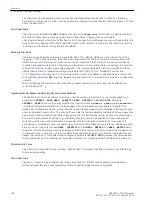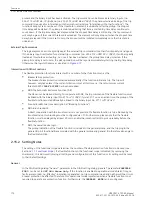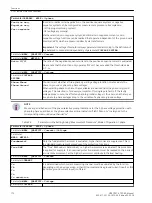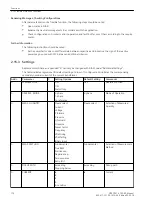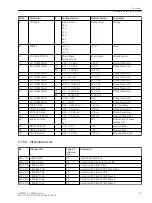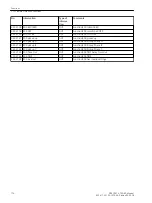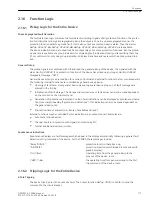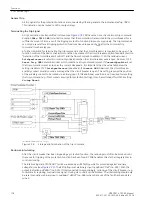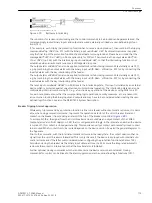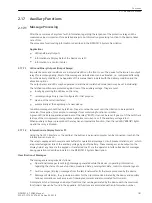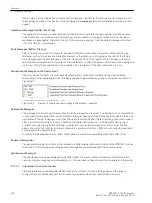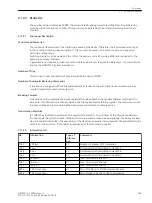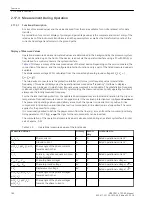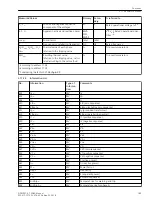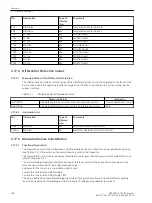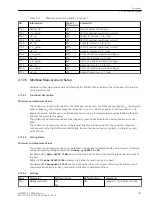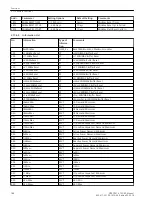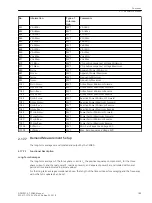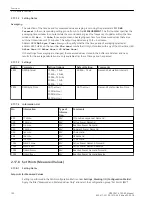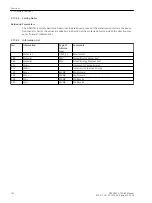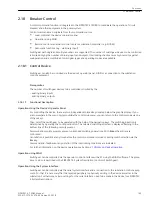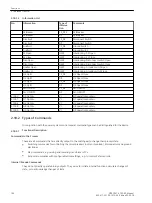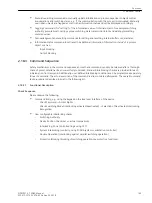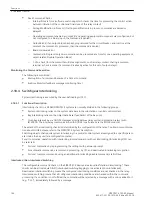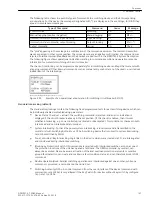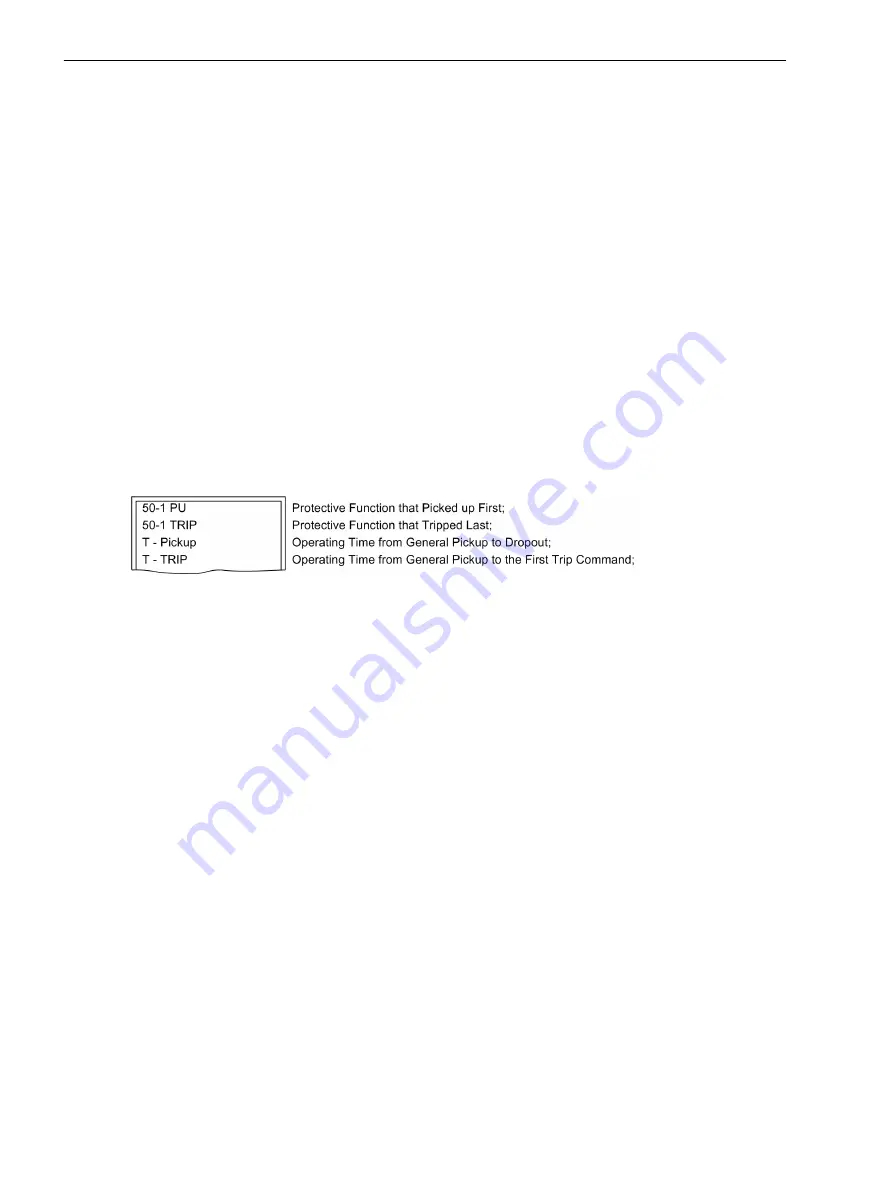
(FNo). There is also an indication of where each message can be sent to. If functions are not present in a not
fully equipped version of the device, or are configured to
Disabled
, then the associated indications cannot
appear.
Operational Messages (Buffer: Event Log)
The operational messages contain information that the device generates during operation and about opera-
tional conditions. Up to 200 operational messages are recorded in chronological order in the device. New
messages are appended at the end of the list. If the memory is used up, then the oldest message is scrolled
out of the list by a new message.
Fault Messages (Buffer: Trip Log)
After a fault on the system, for example, important information about the progression of the fault can be
retrieved, such as the pickup of a protective element or the initiation of a trip signal. The start of the fault is
time stamped with the absolute time of the internal system clock. The progress of the disturbance is output
with a relative time referred to the instant of fault detection, so that the duration of the fault until tripping and
up to reset of the trip command can be ascertained. The resolution of the time information is 1 ms.
Spontaneous Messages on the Device Front
After occurrence of a fault, the most important fault data is output automatically on the device display,
without any further operating actions. It is displayed after a general device pickup in the sequence shown in
.
[anzeige-spontanmeldungen-im-display-des-geraetes-260602-kn, 1, en_US]
Figure 2-82
Display of spontaneous messages in the display – example
Retrievable Messages
The messages for the last eight network faults can be retrieved and read out. The definition of a network fault
is such that the time period from fault detection up to final clearing of the disturbance is considered to be one
network fault. If auto-reclosing occurs, then the network fault ends after the last reclosing shot, which means
after a successful reclosing or lockout. Therefore the entire clearing process, including all reclosing shots,
occupies only one trip log buffer. Within a network fault, several fault messages can occur (from the first
pickup of a protective function to the last dropout of a protective function). Without auto-reclosing each fault
event represents a network fault.
In total 600 indications can be recorded. Oldest data are erased for newest data when the buffer is full.
General Interrogation
The general interrogation which can be retrieved via DIGSI enables the current status of the SIPROTEC 4 device
to be read out. All messages requiring general interrogation are displayed with their present value.
Spontaneous Messages
The spontaneous messages displayed using DIGSI reflect the present status of incoming information. Each
new incoming message appears immediately, i.e. the user does not have to wait for an update or initiate one.
Information to a Control Center
Stored information can additionally be transferred to a central control and storage device if the relay is
connected to such a device via port B. Transmission is possible via various transmission protocols.
2.17.1.3
Functions
2.17 Auxiliary Functions
182
SIPROTEC 4, 7SD80, Manual
E50417-G1100-C474-A2, Edition 02.2018
Summary of Contents for SIPROTEC 4 7SD80
Page 8: ...8 SIPROTEC 4 7SD80 Manual E50417 G1100 C474 A2 Edition 02 2018 ...
Page 10: ...10 SIPROTEC 4 7SD80 Manual E50417 G1100 C474 A2 Edition 02 2018 ...
Page 18: ...18 SIPROTEC 4 7SD80 Manual E50417 G1100 C474 A2 Edition 02 2018 ...
Page 248: ...248 SIPROTEC 4 7SD80 Manual E50417 G1100 C474 A2 Edition 02 2018 ...
Page 298: ...298 SIPROTEC 4 7SD80 Manual E50417 G1100 C474 A2 Edition 02 2018 ...
Page 312: ...312 SIPROTEC 4 7SD80 Manual E50417 G1100 C474 A2 Edition 02 2018 ...
Page 322: ...322 SIPROTEC 4 7SD80 Manual E50417 G1100 C474 A2 Edition 02 2018 ...
Page 400: ...400 SIPROTEC 4 7SD80 Manual E50417 G1100 C474 A2 Edition 02 2018 ...
Page 402: ...402 SIPROTEC 4 7SD80 Manual E50417 G1100 C474 A2 Edition 02 2018 ...

